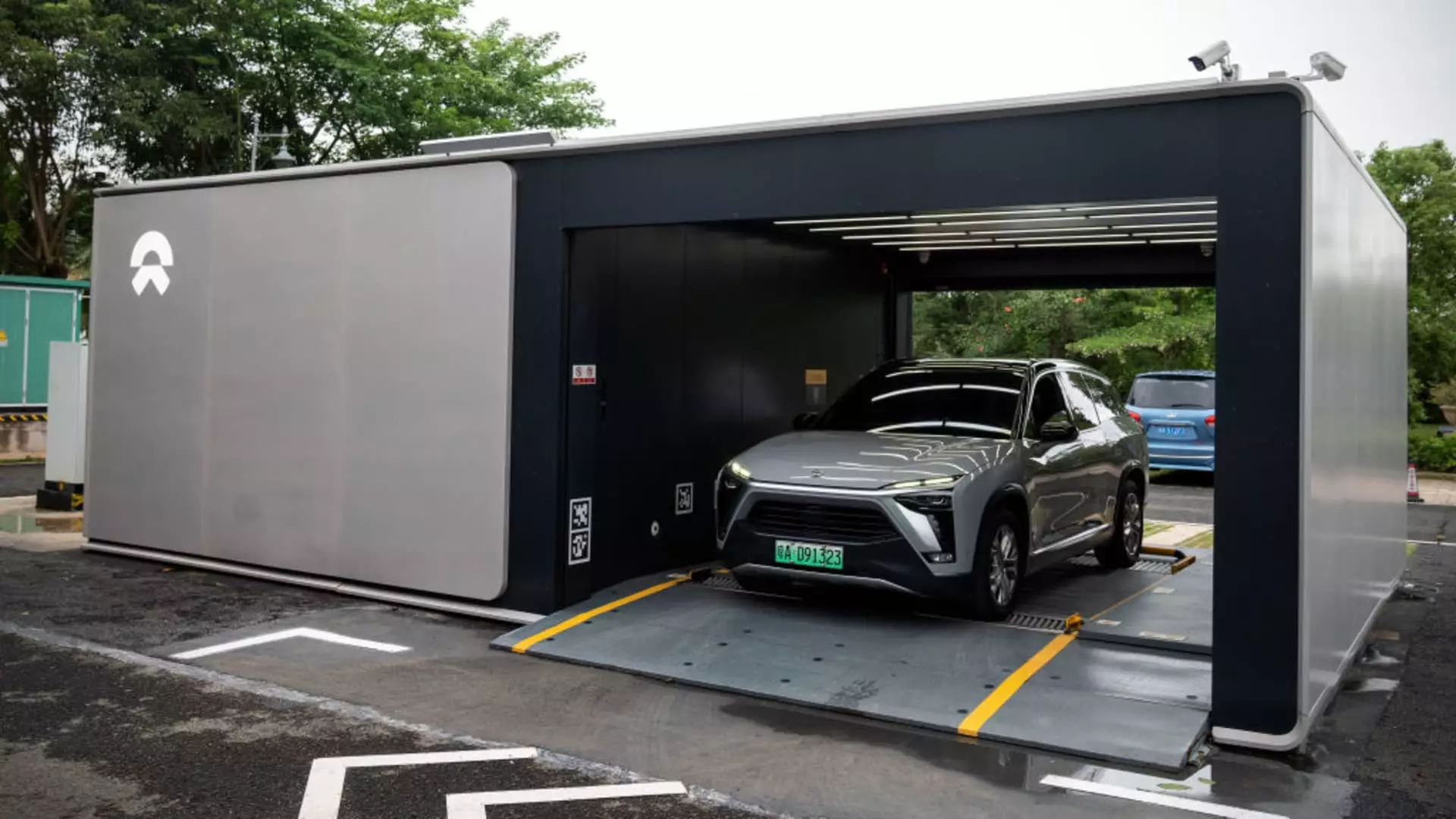The electric vehicle industry has been rapidly growing and evolving, with companies like Nio leading the way in innovation. One of the key aspects that Nio has been focusing on is battery swapping as a way to address consumers’ concerns about driving range. By partnering with other Chinese automakers and battery companies, Nio has been working on expanding its network of battery swap stations to make the process more convenient for electric car owners.
One of the main advantages of battery swapping is the speed at which it can be done. Unlike traditional charging stations, swapping a battery takes only a few minutes, which can significantly reduce the amount of time electric car owners spend waiting to recharge their vehicles. This can help alleviate range anxiety and make electric vehicles a more attractive option for consumers.
Another benefit of battery swapping is the potential for continuous upgrades in battery technology. By participating in a battery swap program, drivers can easily access the latest advancements in battery technology without having to replace their entire vehicle. This can help extend the lifespan of electric cars and ensure they remain competitive in the market.
While battery swapping offers several advantages, there are also some challenges that come with this technology. One of the main obstacles is the need for standardized batteries across different car models. Without industry-wide standards, it can be difficult for companies like Nio to expand their battery swap network to include a wide range of electric vehicles.
Additionally, the cost of building and operating battery swap stations can be significantly higher than traditional charging stations. According to industry experts, a passenger car battery swap station can cost around $500,000 to build, while a basic charging station with two ports costs significantly less. This investment may deter businesses from investing in battery swap technology, especially if they can achieve a higher return on investment with traditional charging stations.
Nio is not the only company exploring battery swapping as a solution for electric vehicles. Tesla, for example, has also experimented with battery swap stations in the past, but ultimately closed its venture. Other startups like Ample have been more successful in implementing battery swap stations, targeting specific markets like Uber drivers in the U.S. and corporate car fleets in Japan and Spain.
By collaborating with automakers like Ford and General Motors, Tesla has been able to expand its network of superchargers worldwide, offering users a fast and convenient way to recharge their electric vehicles. While battery swapping may offer some advantages, these collaborations show that traditional charging stations remain a popular choice for many companies in the electric vehicle industry.
As the electric vehicle industry continues to grow, concerns about battery waste and recycling have become more prevalent. With millions of batteries reaching the end of their warranty period in the coming years, companies like Nio are exploring ways to develop batteries with longer lifespans to reduce waste and environmental impact. By leveraging big data and partnerships with battery giants like Contemporary Amperex Technology, Nio aims to extend the lifespan of its batteries and reduce the overall carbon footprint of electric vehicles.
Battery swapping offers an innovative solution to address range anxiety and improve the user experience for electric car owners. While there are challenges and considerations to be made, companies like Nio are making significant strides in expanding their battery swap network and collaborating with industry partners to drive innovation in the electric vehicle industry. As technology continues to evolve and consumer preferences shift towards sustainable transportation options, battery swapping may play a key role in shaping the future of electric vehicles.


Leave a Reply